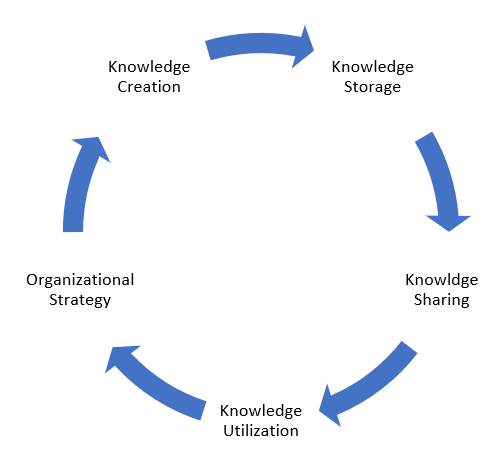Knowledge Management is the methodology, tools and techniques to gather, integrate and disseminate knowledge. It involves processes involving management of knowledge creation, acquisition, storage, organization, distribution, sharing and application. These can be further classified into organization and technology components.
The organization component consists of organization-wide strategy, standard and guidelines, policies, and socio-cultural environment.
The technology component consists of tools and techniques to implement effective knowledge management practice which provides values to its business, employees, customers and partners. The tools can furthers be classified into knowledge creation, knowledge integration, knowledge sharing and knowledge utilization.

- Knowledge Creation: Knowledge is created either as explicit or tacit knowledge. Explicit knowledge is put in paper or electronic format. It is recorded and made accessible to others. Tacit knowledge is created in minds of people. This knowledge resides within individuals. This knowledge needs to be transformed into explicit knowledge so that it can recorded and shared with others in the organization.
- Knowledge Storage: Knowledge is stored and organized in a repository. The decision on how and where lies with the organization. But the objective of this phase to enable organization to be able to contribute, organize and share knowledge with.
- Knowledge Sharing: Knowledge is shared and accessed by people. They can either search or navigate to the knowledge items.
- Knowledge Utilization: This is end goal of knowledge practice. The knowledge management does not have any value if knowledge created is not utilized to its potential. The more knowledge is created as knowledge is applied and utilized.
At Personal level
- Share and Learn: The sharing of knowledge in order to facilitate learning is the first step in knowledge management life-cycle. Sharing of knowledge is one in which people exchange their views and ideas on a particular domain.
- Create: Knowledge is created by sharing of ideas by people working in an organization. Better sharing leads to better ideas thereby creating a valuable knowledge repository.
- Capture and Acquire: Capture and acquisition of knowledge is one in which the knowledge created is collected in huge numbers and stored in a repository.
- Organize: Organizing is the next step to capturing of knowledge. The captured content is organized using a framework or knowledge model. The model reflects the elements of knowledge and flows that are embedded inherently in the specific processes and culture of organization.
- Access, Search and Disseminate: The organized knowledge is put in such a way that it could be accessed, searched and disseminated by the users working in the organization.
- Use and Discover: The last step is to make use of the knowledge acquired in solving problems in real time.
One thought on “Knowledge Management life cycle”